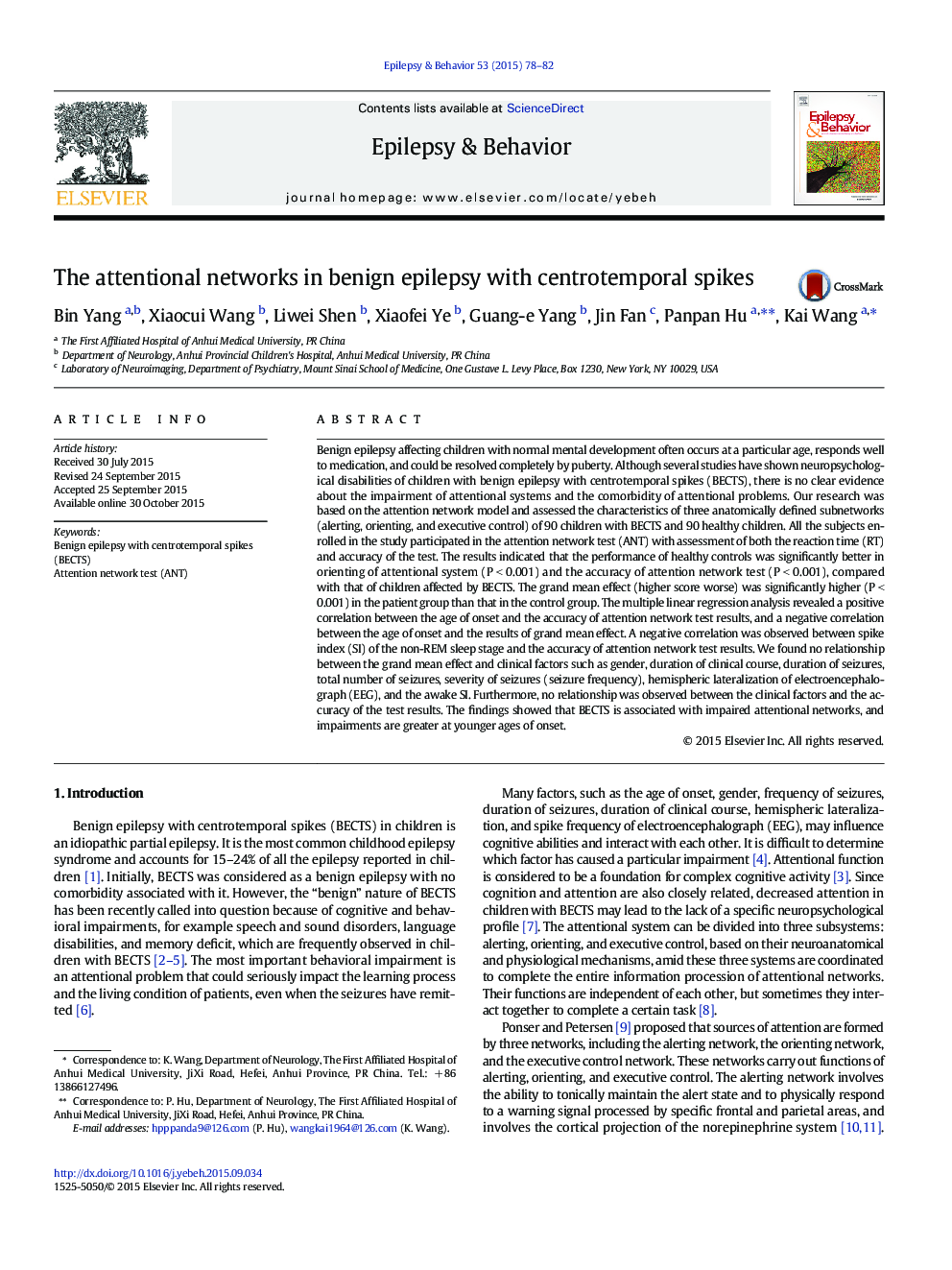| Article ID | Journal | Published Year | Pages | File Type |
|---|---|---|---|---|
| 6010305 | Epilepsy & Behavior | 2015 | 5 Pages |
â¢We examined children with BECTS using the ANT task for the first time.â¢Children with BECTS showed a deficit in the attentional networks.â¢Findings mainly implicate the orienting network, rather than the alerting or executive networks.â¢The younger the age at BECTS onset, the more serious the attentional impairment.
Benign epilepsy affecting children with normal mental development often occurs at a particular age, responds well to medication, and could be resolved completely by puberty. Although several studies have shown neuropsychological disabilities of children with benign epilepsy with centrotemporal spikes (BECTS), there is no clear evidence about the impairment of attentional systems and the comorbidity of attentional problems. Our research was based on the attention network model and assessed the characteristics of three anatomically defined subnetworks (alerting, orienting, and executive control) of 90 children with BECTS and 90 healthy children. All the subjects enrolled in the study participated in the attention network test (ANT) with assessment of both the reaction time (RT) and accuracy of the test. The results indicated that the performance of healthy controls was significantly better in orienting of attentional system (PÂ <Â 0.001) and the accuracy of attention network test (PÂ <Â 0.001), compared with that of children affected by BECTS. The grand mean effect (higher score worse) was significantly higher (PÂ <Â 0.001) in the patient group than that in the control group. The multiple linear regression analysis revealed a positive correlation between the age of onset and the accuracy of attention network test results, and a negative correlation between the age of onset and the results of grand mean effect. A negative correlation was observed between spike index (SI) of the non-REM sleep stage and the accuracy of attention network test results. We found no relationship between the grand mean effect and clinical factors such as gender, duration of clinical course, duration of seizures, total number of seizures, severity of seizures (seizure frequency), hemispheric lateralization of electroencephalograph (EEG), and the awake SI. Furthermore, no relationship was observed between the clinical factors and the accuracy of the test results. The findings showed that BECTS is associated with impaired attentional networks, and impairments are greater at younger ages of onset.
